Christopher Hobbs
See book keywords and concepts |
 The two earliest great classics of Chinese herbal medicine are the Shen nung Pen ts'ao king or Pen ts'ao king, also called Pen king, generally translated to mean "Herbal Classic," and the Ming i pie lu or simply Pie lu which is thought to be a supplement to the Shen nung Pen ts'ao, written in the Wei dynasty (221-264 A.D.). Subsequent authors sometimes combine both works into either name, considered to be the "Herbal Classic." The Pen King is traditionally ascribed to the legendary Emperor Shen Nung (28 Century B.C.) but is now thought to be compiled from earlier manuscripts about 202-221 A.D. The two earliest great classics of Chinese herbal medicine are the Shen nung Pen ts'ao king or Pen ts'ao king, also called Pen king, generally translated to mean "Herbal Classic," and the Ming i pie lu or simply Pie lu which is thought to be a supplement to the Shen nung Pen ts'ao, written in the Wei dynasty (221-264 A.D.). Subsequent authors sometimes combine both works into either name, considered to be the "Herbal Classic." The Pen King is traditionally ascribed to the legendary Emperor Shen Nung (28 Century B.C.) but is now thought to be compiled from earlier manuscripts about 202-221 A.D. |
Earl Mindell, R.Ph., Ph.D.
See book keywords and concepts |
 Traditional Chinese healers rely on herbal medicine, exercise, acupuncture, and meditation. Modern Chinese physicians often incorporate traditional Chinese medicine into their philosophy and practice.
The first Chinese herbal dates back to 3494 B.C., when experts under the direction of Emperor Shen Nung documented the healing powers of more than 7000 herbs. About 1000 years ago, during the Song Dynasty, this information was updated, and information on 2000 effective herbal combinations was published. Traditional Chinese healers rely on herbal medicine, exercise, acupuncture, and meditation. Modern Chinese physicians often incorporate traditional Chinese medicine into their philosophy and practice.
The first Chinese herbal dates back to 3494 B.C., when experts under the direction of Emperor Shen Nung documented the healing powers of more than 7000 herbs. About 1000 years ago, during the Song Dynasty, this information was updated, and information on 2000 effective herbal combinations was published. |
Gale Maleskey
See book keywords and concepts |
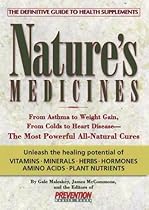 Plants are
Traditional Medicine in Wichita, says that after 18 years of practicing herbal medicine, he tends to prescribe much lower dosages than he once did. "A little bit can be enough. What you're looking to do is nudge the body in one direction or another so it can take care of itself," he says. "You don't want to overdo it." sometimes shredded when wet. Processing times can be shortened or extended. Sometimes, several tinctures are mixed together in herbal combinations developed by David Winston, the company's founder. Plants are
Traditional Medicine in Wichita, says that after 18 years of practicing herbal medicine, he tends to prescribe much lower dosages than he once did. "A little bit can be enough. What you're looking to do is nudge the body in one direction or another so it can take care of itself," he says. "You don't want to overdo it." sometimes shredded when wet. Processing times can be shortened or extended. Sometimes, several tinctures are mixed together in herbal combinations developed by David Winston, the company's founder. |
Textbook of Natural Medicine 2nd Edition Volume 2Michael T. Murray, ND
See book keywords and concepts |
| Old Chinese herbal medicine used for fever yields possible new Alzheimer disease therapy. JAMA 1997; 277: 776
73. Xu SS, Gao ZX, Weng Z et al. Efficacy of tablet Hyperzine A on memory, cognition and behavior in Alzheimer's disease. |
Ralph W. Moss, Ph.D.
See book keywords and concepts |
 Holistic Medical Clinic offers advanced cancer patients hyperthermia induced by immune boosters, ginseng, vitamins, an herbal medicine called Sun Advance® and plasma exchange. Treatment takes 3 to 6 months. 1-18-11 KY Bldg., #6F, Kita-oostsuka, Toshima-ku, Tokyo 170 Japan. Phone: 03-3940-8071. Fax: 03-3917-9753. Tsuneo Kobayashi, MD, director.
Magnetic Microcapsules information:
Dr. Y. Omote, Laboratory of Pathology
Hokkaido University School of Medicine, Sapporo, Japan
Photodynamic Therapy information:
W.G. Holistic Medical Clinic offers advanced cancer patients hyperthermia induced by immune boosters, ginseng, vitamins, an herbal medicine called Sun Advance® and plasma exchange. Treatment takes 3 to 6 months. 1-18-11 KY Bldg., #6F, Kita-oostsuka, Toshima-ku, Tokyo 170 Japan. Phone: 03-3940-8071. Fax: 03-3917-9753. Tsuneo Kobayashi, MD, director.
Magnetic Microcapsules information:
Dr. Y. Omote, Laboratory of Pathology
Hokkaido University School of Medicine, Sapporo, Japan
Photodynamic Therapy information:
W.G. |
Ruth Winter, M.S.
See book keywords and concepts |
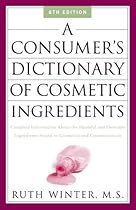 Calamus root is an ancient Indian and Chinese herbal medicine used to treat acid stomach, irregular heart rhythm, low blood pressure, coughs, and lack of mental focus. Native Americans would chew the root to enable them to run long distances with increased stamina. Externally, it was used to induce a state of tranquility. Banned as a food additive by the FDA.
ACRYL GLUTAMATE • A surfactant. See Glutamate.
ACRYLAM1DE • Colorless, odorless crystals soluble in water and derived from acrylonitrile and sulfuric acid. Calamus root is an ancient Indian and Chinese herbal medicine used to treat acid stomach, irregular heart rhythm, low blood pressure, coughs, and lack of mental focus. Native Americans would chew the root to enable them to run long distances with increased stamina. Externally, it was used to induce a state of tranquility. Banned as a food additive by the FDA.
ACRYL GLUTAMATE • A surfactant. See Glutamate.
ACRYLAM1DE • Colorless, odorless crystals soluble in water and derived from acrylonitrile and sulfuric acid. |
James A. Duke, Ph.D.
See book keywords and concepts |
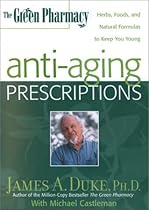 I have rooms full of botany and herbal medicine books and journals, and the increased moisture makes them mildewy.
Dry skin often responds well to moisturizing lotions. But choose your product carefully. If its label lists water or alcohol among its first three or four ingredients, it may actually dry your skin. Instead, look for a moisturizer made with natural emollients, such as avocado oil, coconut oil, lanolin, and olive oil.
Actually, the best emollients contain essential fatty acids, which help the emollients penetrate the skin. Both cocoa butter and jojoba butter have fatty acids. I have rooms full of botany and herbal medicine books and journals, and the increased moisture makes them mildewy.
Dry skin often responds well to moisturizing lotions. But choose your product carefully. If its label lists water or alcohol among its first three or four ingredients, it may actually dry your skin. Instead, look for a moisturizer made with natural emollients, such as avocado oil, coconut oil, lanolin, and olive oil.
Actually, the best emollients contain essential fatty acids, which help the emollients penetrate the skin. Both cocoa butter and jojoba butter have fatty acids. |
| If you can't find it in your local
Know Your Liver's Herbal Foes
While I'm a big supporter of herbal medicine, I should mention that quite a few herbs have been linked, at least preliminarily, to liver damage. These include alkanet, borage, butterbur, coltsfoot, com-frey, germander, liferoot, melilot, pennyroyal, and Virginia snakeroot.
They're nowhere near as poisonous as Amanita mushrooms, but over time, they can cause harm. So I caution against ingesting them regularly or in large amounts. |
| SIBERIAN
[ELEUTherococcus senticosus). herbal medicine uses primarily three types of ginseng. They are different plants, but they contain rather similar compounds. Skilled Asian practitioners tend to use Asian and American ginsengs for different purposes, but in the West, the herbs are often used interchangeably.
The ginsengs are best known as adaptogen/tonics, meaning that they exert a subtle but significant health-enhancing effect on the entire body. One way in which they achieve this effect is by stimulating the immune system. |
| Here are my top picks from the herbal medicine chest. willow bark (salix, various species) and licorice (glycyrrhiza glabra). Instead of first-generation NSAIDs, I've always preferred the combination of willow bark, which contains salicin (the plant precursor of aspirin), and licorice, which helps prevent the ulcers and other gastrointestinal problems that salicin might cause. Of course, in its recommended doses, salicin is less likely to irritate the gastrointestinal tract than pharmaceutical NSAIDs, because it's not as potent. |
Textbook of Natural Medicine 2nd Edition Volume 2Michael T. Murray, ND
See book keywords and concepts |
| Treatment of epileptic patients with the Chinese herbal medicine "Saiko-Keishi-To" (SK). IRCS Med Sci 1982; 10: 88-89
86. Ferrendelli JA. Roles of biogenic amines and cyclic nucleotides in seizure mechanism. Ann Neurol 1984; 16s: 98-103
87. Seamon KB. Forskolin. A unique diterpene activator of c-AMP generating systems. J Cyclic Nucleotide Res 1981; 7: 201-224
88. Kanatoni H, Tanimoto J, Hidaka K et al. Search for adenylate cyclase activator in medicinal plants. |
Ruth Winter, M.S.
See book keywords and concepts |
 Elm derivatives have been widely used in herbal medicine. The inner bark contains a lot of mucilage and is used in cosmetics, in baby products, and in herbal products to soothe the skin. EMBRYO EXTRACT • An oil extracted from fetal calves, often promoted in "youth-restoring" creams and lotions.
EMETINE CHLORIDE • A preservative. Made from ipecac (see), it is used in medicine to treat amebic dysentery. Acute toxicity can occur at any dose. EMOLLIENTS • Creams, Lotions, Skin Softeners, and Moisturizers. Elm derivatives have been widely used in herbal medicine. The inner bark contains a lot of mucilage and is used in cosmetics, in baby products, and in herbal products to soothe the skin. EMBRYO EXTRACT • An oil extracted from fetal calves, often promoted in "youth-restoring" creams and lotions.
EMETINE CHLORIDE • A preservative. Made from ipecac (see), it is used in medicine to treat amebic dysentery. Acute toxicity can occur at any dose. EMOLLIENTS • Creams, Lotions, Skin Softeners, and Moisturizers. |
Textbook of Natural Medicine 2nd Edition Volume 2Michael T. Murray, ND
See book keywords and concepts |
| Weiss RF. herbal medicine. Beaconfield: Beaconfield. England, 1988
25. Hoffman D. The holistic herbal. Scotland: Findhorn Press. 1983
26. Felter HW. The eclectic materia medica, pharmacology and therapeutics. Portland, OR: Eclectic Medical. 1985
27. Leung AY. Encyclopedia of common natural ingredients used in food. New York, NY: John Wiley. 1980: p 162-163
28. Brinker F. In: Alstat EK, ed. Eclectic dispensatory of botanical therapeutics. Portland, OR: Eclectic Medical. 1989: p 5.1-5.41
29. Dreisbach RH. Handbook of poisoning. 11th edn. Los Altos, CA: Lange Medical. 1983
30. |
National Women's Health Network
See book keywords and concepts |
 All reported cases of licorice-induced problems have been linked to candies, gum, laxatives, or chewing tobacco, not from the use of licorice as herbal medicine. (Most "licorice" candies manufactured in the United States are actually flavored with anise; imported candies usually contain real licorice.)38
Because licorice can lower potassium levels, it should not be combined with diuretics. Also, the side effects of licorice can mimic the effects—and side effects—of systemic steroids.
Deglycyrrhizinated forms of licorice are available and recommended for conditions such as ulcers. All reported cases of licorice-induced problems have been linked to candies, gum, laxatives, or chewing tobacco, not from the use of licorice as herbal medicine. (Most "licorice" candies manufactured in the United States are actually flavored with anise; imported candies usually contain real licorice.)38
Because licorice can lower potassium levels, it should not be combined with diuretics. Also, the side effects of licorice can mimic the effects—and side effects—of systemic steroids.
Deglycyrrhizinated forms of licorice are available and recommended for conditions such as ulcers. |
John Boik
See book keywords and concepts |
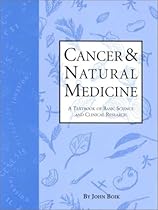 In 211 patients with middle- and late-stage lung cancer, electrical treatment, combined with herbal medicine, resulted in a short-term response rate of 85% (based upon international standards). The response rate for electricity or herbs alone was 69% and 53% respectively. Four-year survival rates were 54% for the combined treatment, 46% for the group receiving electricity, and 40% for the group receiving herbs. The amount of electricity applied was approximately 100 coulombs/cm3 of tumor. Needles were inserted into the tumors to act as electrodes (Xin, 1993). In 211 patients with middle- and late-stage lung cancer, electrical treatment, combined with herbal medicine, resulted in a short-term response rate of 85% (based upon international standards). The response rate for electricity or herbs alone was 69% and 53% respectively. Four-year survival rates were 54% for the combined treatment, 46% for the group receiving electricity, and 40% for the group receiving herbs. The amount of electricity applied was approximately 100 coulombs/cm3 of tumor. Needles were inserted into the tumors to act as electrodes (Xin, 1993). |
| In Chinese herbal medicine, bupleurum is classified as a cool herb and is used to treat liver qi stagnation and certain types of fever. Bupleurum is generally prescribed at a dose of 3 to 12 grams/day in decoction.
Bupleurum saponins (saikosaponins) exhibit antiinflammatory activity equivalent to prednisolone in animal studies. An oral dose of 100 to 400 mg was effective in mice, which was approximately 10 times the effective intravenous dose. Therefore the bioavailability is approximately 10%. The content of total saponins in bupleurum (B. falcatum) is approximately 2. |
| A number of materials that contain collagen, gelatin, or keratin are used in Chinese herbal medicine.5 As a group, these materials exhibit anti-inflammatory, hemostatic, immu-nostimulating, and analgesic properties. Some may also possess anticancer properties and have been used in TCM to treat cancer patients. Examples include the scales of
2 The dose used to treat diarrhea is approximately 0.6 to 2.0 grams.
3 Dr. Jacob is Gerlinger professor of Surgery at Oregon Health Sciences University and one of the original medical investigators of DMSO. |
| Used in Chinese herbal medicine.
Sources: Suffness, 1994, personal communication; Suffhess and Pezzuto, 1991; Crommelin andMidha, 1992; Suffness et al, 1989; Vlietinck andDommisse, 1985; Lien and Li, 1985; Hsu et al, 1986; Hsu et al, 1985; Hsu etal, 1982 secondary testing. Isolated compounds that proceeded to advanced development (secondary testing or clinical trials) are listed Table 11.5. Of these, four progressed to clinical trials and demonstrated efficacy. |
| As will be discussed later in this book, clinical studies conducted in China tend to be more positive, and a number of them suggest that combining herbal medicine with conventional treatment may moderately increase survival time. They also suggest that the combined treatment may improve the quality of life of patients (by reducing nausea and vomiting, improving appetite, and so on). Some of the more successful trials reported that survival time doubled. However, most of the Chinese
2 The five-year relative survival rate is often used as a rough estimate of the cure rate. |
| Flavonoids appear to be the active constituents in numerous medicinal plants, and plants that contain flavonoids are widely used in herbal medicine traditions around the world.
Flavonoids can be divided into five categories (Har-borne and Baxter, 1991:324):
1) Anthocyanins, anthochlors, and aurones. Anthocyanins are red-blue pigments in plants (such as found in red to blue fruits). Anthochlors and aruones are yellow pigments found in flowers.
2) Minor flavonoids. Minor flavonoids include flavanones, flavan-3-ols, dihydroflavones, and dihydrochalcones. |
Ralph W. Moss, Ph.D.
See book keywords and concepts |
 Chinese herbal medicine has deep roots in ancient history. Asian scientists have now begun to purge non-scientific elements from this extremely valuable tradition.
Herbs in kampo medicine are never taken alone, but usually involve complicated prescriptions of ten plants, or more. Such herbs are said to work synergistically.
Many constituents of kampo prescriptions have been found to have significant biological effects. Scientific studies in this area are vigorous and promising. Most cancer research has focused on three kampo preparations: juzen-taiho-to; shi-un-kou; and sho-saiko-to. Chinese herbal medicine has deep roots in ancient history. Asian scientists have now begun to purge non-scientific elements from this extremely valuable tradition.
Herbs in kampo medicine are never taken alone, but usually involve complicated prescriptions of ten plants, or more. Such herbs are said to work synergistically.
Many constituents of kampo prescriptions have been found to have significant biological effects. Scientific studies in this area are vigorous and promising. Most cancer research has focused on three kampo preparations: juzen-taiho-to; shi-un-kou; and sho-saiko-to. |
Michael Tierra
See book keywords and concepts |
 In our economic system, if there is no profit motive, a serious focus on prevention would wreak havoc on the economic status quo, and further, there is no incentive for a highly vested pharmaceutical company to conduct research on herbs or such other low-tech cancer treatments as herbal medicine. For these reasons, I feel that it is important to share some of my personal findings and experience in the botanical treatment of cancer of all kinds.
This is not the place to exhaustively define cancer. In our economic system, if there is no profit motive, a serious focus on prevention would wreak havoc on the economic status quo, and further, there is no incentive for a highly vested pharmaceutical company to conduct research on herbs or such other low-tech cancer treatments as herbal medicine. For these reasons, I feel that it is important to share some of my personal findings and experience in the botanical treatment of cancer of all kinds.
This is not the place to exhaustively define cancer. |
Textbook of Natural Medicine 2nd Edition Volume 2Michael T. Murray, ND
See book keywords and concepts |
| Recently, Western scientific methodologies have been used to evaluate the efficacy of a Chinese herbal medicine combination, Saiko-Keishi-To (SK).82 SK demonstrated dramatic therapeutic effects on some difficult cases of epilepsy which had long been unsuccessfully treated with standard allopathic anticonvulsive drugs. SK is a combination of nine botanical drugs:
• Bupleuri radix (5.0 g)
• Scutellaria radix (3.0 g)
• Pinelliae tuber (5.0 g)
• Paeoniae radix (6.0 g)
• Cinnamon cortex (2.0 g)
• Zizyphi fructus (4.0 g)
• Ginseng radix (30.0 g)
• Glycyrrhizae radix (1. |
Sheldon Saul Hendler
See book keywords and concepts |
 It is also widely used in China as an herbal medicine. Other species of angelica which come from Europe are used for flavoring wines, perfumes and liqueurs. These are also used in folk medicine.
Dong quai has been used in traditional Chinese medicine for thousands of years, mainly for female disorders. It is used to treat menstrual disturbances, such as infrequent menstruation and abnormal menstrual bleeding. It is thought to work as a blood tonic, that is, to "build up" the blood and "invigorate" the circulation. It is also widely used in China as an herbal medicine. Other species of angelica which come from Europe are used for flavoring wines, perfumes and liqueurs. These are also used in folk medicine.
Dong quai has been used in traditional Chinese medicine for thousands of years, mainly for female disorders. It is used to treat menstrual disturbances, such as infrequent menstruation and abnormal menstrual bleeding. It is thought to work as a blood tonic, that is, to "build up" the blood and "invigorate" the circulation. |
Robyn Landis
See book keywords and concepts |
 Karta Purkh says, "In the last five to ten years, we have been able to do things with natural healing, and especially herbal medicine, that we could only dream of before that. It's become a very small world. We can get herbs from anywhere on the planet at a moment's notice. We can call China and have an herb air-freighted to us next day. We can obtain things we could only hope to read about in a book ten years ago. Thus we can create previously unheard-of combinations of herbs from China, India, Africa, and so on that may be much more effective medicine than a single herb. Karta Purkh says, "In the last five to ten years, we have been able to do things with natural healing, and especially herbal medicine, that we could only dream of before that. It's become a very small world. We can get herbs from anywhere on the planet at a moment's notice. We can call China and have an herb air-freighted to us next day. We can obtain things we could only hope to read about in a book ten years ago. Thus we can create previously unheard-of combinations of herbs from China, India, Africa, and so on that may be much more effective medicine than a single herb. |
Valerie V. Hunt
See book keywords and concepts |
 The practice of wearing copper, crystals, semi-precious stones or amulets comes from early herbal medicine and shamanism. These may be effective if the person believes that they have magical powers to heal. Crystals held by healers may focus and make more coherent the healer's energy, but there is no evidence that any of these alone has any measurable effect as a healing tool.
The elusive relationship between doctor or healer and patient is an emotion-laden connection which carries many messages. The practice of wearing copper, crystals, semi-precious stones or amulets comes from early herbal medicine and shamanism. These may be effective if the person believes that they have magical powers to heal. Crystals held by healers may focus and make more coherent the healer's energy, but there is no evidence that any of these alone has any measurable effect as a healing tool.
The elusive relationship between doctor or healer and patient is an emotion-laden connection which carries many messages. |
Robyn Landis
See book keywords and concepts |
 If you're interested in what herbal medicine has to offer, I strongly urge you to read on!
—Michael T. Murray, N.D. November 1996
For Mom and Dad
If everyone is thinking alike, then no one is thinking.
—Benjamin Franklin
Americans always do the right thing: after they've tried everything else.
—Winston Churchill
Part I
Background and
History
Introduction
YOU DON'T HAVE TO GET SICK
Does it ever occur to you that it might be possible to live your life free of the sicknesses you've always thought were inevitable? If you're interested in what herbal medicine has to offer, I strongly urge you to read on!
—Michael T. Murray, N.D. November 1996
For Mom and Dad
If everyone is thinking alike, then no one is thinking.
—Benjamin Franklin
Americans always do the right thing: after they've tried everything else.
—Winston Churchill
Part I
Background and
History
Introduction
YOU DON'T HAVE TO GET SICK
Does it ever occur to you that it might be possible to live your life free of the sicknesses you've always thought were inevitable? |
| Herbal Defense gives you access to the mighty contents of the herbal medicine chest: the natural, cost-efficient, and powerfully effective tools you are demanding to determine your own destiny in the quest for superior health. You will learn that it is possible to be bigger, stronger, hardier, and smarter than the rising tide of drug-resistant threats to our health and quality of life. And you will learn exactly what you can do about it, and how. |
| HOW DID I GET INVOLVED IN herbal medicine?
Let's go back in time for a moment to catch a glimpse of me one decade ago, at the age of twenty-one. I was young and should have been the picture of health. Youth equals health, right? Not! I couldn't have been farther from what I now consider to be "health." I had dozens of food allergies and persistent intestinal Candida (yeast), as well as recurrent bladder infections (for which I took antibiotics constantly). I thought headaches were a fact of life—I had them almost every day. I had more colds and flu than anyone else I knew. |
Dr. Gary Null
See book keywords and concepts |
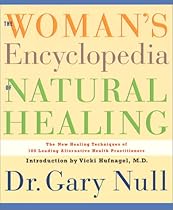 Mowrey, The Scientific Validation of herbal medicine (New Canaan, Conn.: Keats Publishing, 1986): 273.
TRADITIONAL CHINESE MEDICINE
Female urinary tract infection patients given yishenkang granules experienced enhanced immune function, with a cure rate reaching over 68 percent.
J. S. Sun, [Prevention and Treatment of Recurrent Urinary Tract Infection with a Yishenkang Granule], Chung Hsi I Chieh Ho Tsa Chih 9, no. 8 (August 1989): 452, 469-71. Mowrey, The Scientific Validation of herbal medicine (New Canaan, Conn.: Keats Publishing, 1986): 273.
TRADITIONAL CHINESE MEDICINE
Female urinary tract infection patients given yishenkang granules experienced enhanced immune function, with a cure rate reaching over 68 percent.
J. S. Sun, [Prevention and Treatment of Recurrent Urinary Tract Infection with a Yishenkang Granule], Chung Hsi I Chieh Ho Tsa Chih 9, no. 8 (August 1989): 452, 469-71. |












